
Ben Chasny couldn’t sleep. Late last year, Chasny—who has helped shape the vanguard of experimental rock and folk for the last two decades as Six Organs of Admittance—was moving back to California after extended stints in New England. His partner, Magik Markers cofounder Elisa Ambrogio, was still working on the East Coast. After each of his frequent visits to Connecticut, he would return to their new half-empty home in Humboldt County and grapple with lingering jet lag.
Chasny would go to bed early, wake up in the middle of the night, and struggle to get more rest. To battle the cycle, he finally turned on a virtual synthesizer and began shaping billowing drones he thought might help, a self-prescribed sleeping pill of sound.
“I would know these songs were doing what they were supposed to do when I started falling asleep making them,” says Chasny from his home in California, laughing. “I know that sounds cheesy, but it’s true.”


Before Chasny began writing the four exquisite pieces on his new self-released Sleep Tones, he tried various algorithmic playlists for meditative music. But loops that simply repeated a pattern, or musicians who seemed compelled to demonstrate, say, their jazz-chord proficiency, were too jarring. So he played almost every note on these four 20-minute tracks, named for the stars and nebula of Orion, and tried to structure them like a series of increasingly extended breaths.
“You know when you’re doing a relaxation method or meditation and you close your eyes and try to breathe longer and steadier?,” he says. “I tried to mimic those breath exercises, like when you’re calming down. The phrases get longer and longer, then they resolve.”
For years, Chasny had fallen asleep to white noise apps on his phone or books on tape. But the self-made states of calm on Sleep Tones, a record that manages to sound somehow both aquatic and astral, have become his nightly narcotic of choice. Ambrogio recently snapped a photo of him, he admits, taking an afternoon nap to his own record.
There is, of course, a long and rich history of music made to promote an easy night’s rest—or, at least, make insomnia a little more tolerable. The creation myth for Bach’s Goldberg Variations centers around a sleepless Count, while the drone of the Indian tanpura has long been recognized for its soporific tendencies. Canonized sleep music sweeps from minimalists like La Monte Young and Marian Zazeela’s Dream House, to the all-night synthesizer fantasias of Robert Rich’s Sleep Concerts, and the meticulousness of Max Richter’s eight-hour 2015 gauntlet, Sleep.
But those albums and events are ostentatious things, requiring armies of equipment or staff. In recent years, broader access to digital production software and, in turn, digital distribution has facilitated a boomlet of this heavy-lidded music—that is, you no longer need massive racks of synthesizers or an eight-disc box set to render and deliver scores for a good night’s sleep. Even erstwhile pop star Moby has issued eight hours of ambient music online for free in recent years, long tracks he likewise wrote at home alone as sleep aids for himself.

“I just wanted pieces that sit there and are crafted to create calm, peace, and repose. It’s purely utilitarian,” Moby says. “And then I realized everyone else I knew was anxious and panicking, too, so why not release it?”
In recent months, that pervasive anxiety seems to have hit new highs amid the coronavirus pandemic. It’s been showing up in our sleep, too. The New York Times, Time, and the Smithsonian Magazine have all published stories about how unrest from being housebound has impacted our dreams. Multiple online repositories are collecting people’s COVID-19 nightmares. And since the second week in March, when Donald Trump declared a national emergency, Google searches for “ambient music” have hit several new spikes. The science about whether or not music or white noise helps you sleep is incredibly mixed, but, as leading researcher and University of Pennsylvania professor Mathias Basner recently put it, “If you try this and it helps you, do it, by all means.”
“Our world is so noisy now, and our brains just need something else to focus on,” says Chasny. “If you’re not good at breath exercises, maybe this kind of music can help out a little bit.”
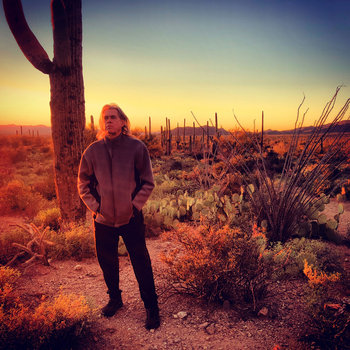
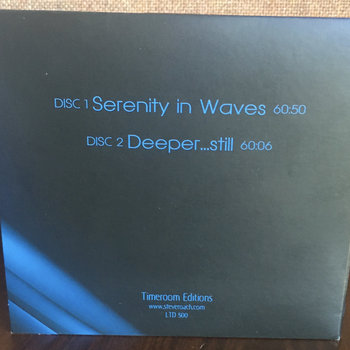
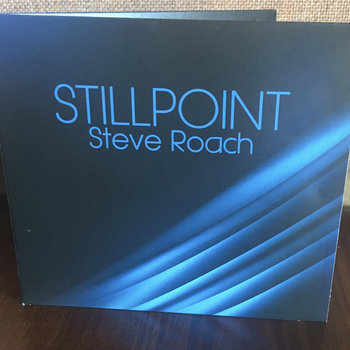


Compact Disc (CD)



Ambient composer Steve Roach has been a one-person experiment for sleep music, and for at least the last 15 years, he has virtually lived in sounds of his own design. Roach runs some low-level loop all day, turning up the volume ever so precisely at night upon entering what he calls his “sleep chamber.” He talks about creating a “habitat atmosphere” and “a sanctuary of sound” for his listeners—prescribing music like a doctor adjusting your dosage or a physical therapist modifying your exercise routine. For the last two months, he’s been living inside the two crystalline tracks of his 2019 album, Stillpoint, but he accepts that his own prescription may change at any moment.
“Some of this music, it sounds like an eternal flame. You can just put it on and never take it off for the rest of your life. It just builds up this energy day after day, year after year,” says Roach, who speaks with the same slipstream sensibility he applies to sound. “As you get more finely tuned to the sound, you can lower the dosage, or the volume. It actually gets more potent.”
Maybe the idea of listening to music to help you sleep seems like a technological bridge too far. Since we live most of our lives now mediated by one screen or another, wading through torrents of alternating inputs, can’t sleep be the one place that’s free of extra information, an actual retreat into complete silence? That sounds nice. But for Roach, it’s ignoring what he calls “a piledriver that is getting louder and more intense”—that is, the increasing din of daily existence, whether that’s the noise of the city where you live, the basal hum of those blinking gadgets in your bedroom, or merely the whirl of worries in your head.
“You’re using sound to create a supportive space in your habitat, and that has never been more needed,” Roach says. “Nourishing sleep or relaxation or a deep inner-connection right now is necessary.”
:
00:00:02


What if your white noise machine came with a high concept? That’s one takeaway from a series of anonymous recordings on Brian Grainger’s Psoma Psi Phi label, attributed only to “:” [Not to be confused with “.” – ed.] and numbered like passing seconds on a digital clock. These seemingly endless tones begin when the sound of an ostensibly silent room is recorded, stretched, and routed through a panoply of processors and pedals, then played back into a new room. Inspired by Alvin Lucier’s ongoing experiments with the resonant frequencies of a physical space and a belief that time is mutable, these 10 albums (of a planned 60!) bloom methodically from ignorable quiet into magnificent hum. 00:00:02 conjures the enormity of a submarine’s engine, waves of sound vibrating the surrounding water. It’s strangely soothing; contemplate the animating idea while you slip away.
Ann Annie
wander into


Under the name Ann Annie, Portland’s Eli Goldberg likes to take his synthesizers on field trips—find him on YouTube scoring a sunrise in the Columbia Gorge or letting his circuits run wild from a ridge overlooking his city. Goldberg began exploring ambient music years ago to quell his own anxieties before bedtime. His splendid 2019 LP, wander into, feels like a sampler of assorted Sleepytime teas, or a tray of CBD supplements. Throughout these nine relatively brief tracks, he glides through electric atmospheres, allows guitar lines to fade into oblivion, and conjures electroacoustic fantasies that suggest a more languid Fennesz. If multi-hour sleep cycles seem like too big a commitment, wander into is an easily accessible onramp.
Caroline McKenzie
(the first snow from soon)


Prolific Glasgow composer Caroline McKenzie has two primary modes of operation—and a separate handle for each. As Beth Gripps, she mines societal unease in brittle electronic expanses, scoring the sensation of frayed nerves. Under her own name, McKenzie uses piano, synthesizers, and her voice to make rather calming music, harbors from the worries of the day. The three pieces on this gorgeous album are her personal sleep aids, used to battle “recurring insomnia.” They are little immersive wonders, suspending you inside of tones that suggest those moments when a church choir taps some heavenly essence. “The stillness” is an accretive beauty, lifting upward to cradle you. The miracle cure here, though, is “…and the stars faded out.” For 22 minutes, McKenzie repeatedly teases the vanishing point of sound, getting so quiet you swear she’s disappeared, perhaps falling to sleep herself.
Elizabeth Veldon
because you love to be with me as i make music i make this song to help you sleep


The music of British sound artist and trans-rights advocate Elizabeth Veldon is typically so subtle you question if anything is happening at all. Taking cues from synth pioneer Éliane Radigue, stasis master The Hafler Trio, and the stark paintings of Barnett Newman, Veldon allows pure electronic tones to corrode, morph, or collapse altogether. Hearing the change is like trying to notice the growth in a sequoia from one second to the next. This 30-minute piano piece has a similar ethos. Veldon hunts and pecks through a stunted melody, pauses, and eventually resumes. Will it ever evolve or resolve? She simply returns to it, the dynamics shifting slightly as the tape hiss trickles past like the sound of a distant stream. You hang on every repeated phrase and wait for some revelation, only to disappear alongside Veldon in the end.
Isothesis
Isothesis x Mahler


As Isothesis, Parisian producer Guillaume Tiger makes powerful and sophisticated drones, his long tones gilded by scintillating layers of static and reinforced by rhythms that feel like mechanical phantoms. His six-hour remix of Gustav Mahler’s 10 symphonies—commissioned as an overnight radio transmission for a Monte-Carlo festival—combines prickly field recordings with stretched symphonic passages so soft they feel like an endless pillow. In “Part 2,” moments of near-complete stillness rub up against sweet birdsong and a fastidiously restrained rumble. Tiger begins this suite through a scrim of dissonance, undergirded by a web of faint beats. Concentrate on those thumps, and as they steadily disappear beneath the strings, you follow them into rest.
Milieu
Phosphene Weather [10th Anniversary Expanded Reissue]

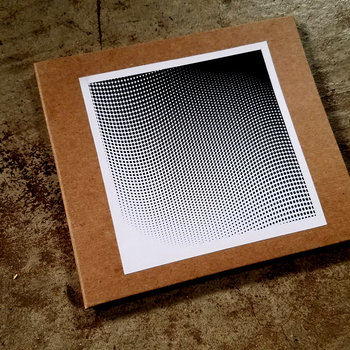
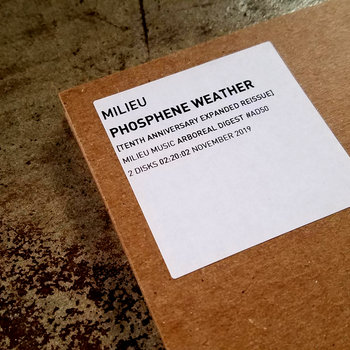
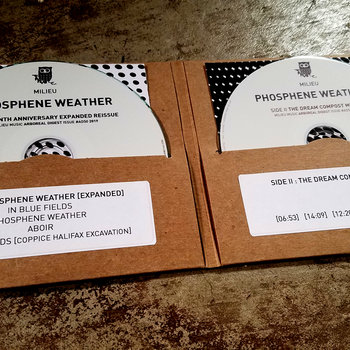


Compact Disc (CD)




Ohio’s Brian Grainger is a mood-music mensch. During the last dozen years, he’s released dozens of titles keyed to specific situations or needs—most recently, the five-album relaxation series Vibratelepathic Antiviral Broadcast, which suspends listeners in massive and patiently morphing tones. The guitarist’s Phosphene Weather—a reference to those psychedelic swirls that appear if you push down lightly on your closed eyelids—is a wonder of luxurious drones that pop and hiss, like oil heated over fire. Grainger’s work is often rhythmic, sometimes aggressively so for slumbering. And yet he moves gingerly through the pulses here, lulling you into musical rests. Phosphene Weather is so bright and vivid it feels like somnambulance itself. Lean in, though, and it starts to curl around you like a blanket.
Stars of the Lid
The Tired Sounds of


Perhaps it’s cheating to include The Tired Sounds of, the tremendous sixth album from Stars of the Lid. A touchstone for bedroom droners and the modern classical scene alike, it requires no new fanfare. And in spite of its somnolent suites of glacially paced undulations and its slumbering title, it’s not intended as a sleeping soundtrack. Still, these two hours provide a sort of uneasy cradle, with the crackle of field recordings and wisps of dissonance interrupting its horizons of seesaw strings and guitar phosphorescence. Focus on the painterly gradations and details—like the tiny loss of static as an amplifier turns off at the start of “Broken Harbors, Pt. 2” or the way that sounds played forwards and backwards form a web during “Piano Aquieu”—and fall into this tender drift. If you don’t, there are worse ways to spend two hours in the dark than hearing this masterpiece.
Steve Roach
Immersion : One



Compact Disc (CD)

There are seemingly infinite entry points into the discography of Steve Roach, soon finishing up his fourth decade as a doyen of drowsy synthesis. He’s released almost 200 records in that time span, including a half-dozen genre benchmarks, like the 1984 dream sequence Structures from Silence. Dive right in, at least for sleep, with a rather recent ongoing series—Immersion, now almost 10 volumes deep. (There’s an app, too!) These records glow like bioluminescent microcosms, with brilliant melodic rays and glittering glissandi shooting through an intricate substructure of interwoven tones. You sort of surrender to Roach’s work like it’s an ornate hydrological system, letting it ferry you where it will. During the first quarter of Immersion : One, you might notice a faint whistle, like a luring bird song or a tea kettle in someone else’s house. Trace those sounds as long as you can, straight on to sleep.
Tom Hartley
9 beet superstretch


The idea of familiar music slowed beyond the point of recognition is no longer novel—a seraphic version of Justin Bieber’s “U Smile,” a sweet bauble about smiling, slowed down immensely has been streamed an astounding six million times during the last decade. But in 2002, when Norwegian artist Leif Inge tugged at Beethoven’s Ninth Symphony until it lasted for 24 mesmerizing hours, the idea seemed absurd and spectacular. (You can listen to Inge’s work on eternal repeat). In California, Tom Hartley decided to take the conceit one tremendous step further: stretch the symphony for 24 days, until the first movement alone lasts nearly a week. The results are preposterous, uncanny, and gorgeous, with individual notes sinking or lifting with the steadiness of a rapturous sunset or sunrise. Listen in eight-hour chunks, and this will get you to sleep for months.







